-
 Bitcoin
Bitcoin $118,841.1054
1.02% -
 Ethereum
Ethereum $3,364.2689
7.44% -
 XRP
XRP $3.0337
3.93% -
 Tether USDt
Tether USDt $1.0004
0.04% -
 BNB
BNB $708.2059
2.49% -
 Solana
Solana $173.2385
5.74% -
 USDC
USDC $0.9999
-0.01% -
 Dogecoin
Dogecoin $0.2121
6.85% -
 TRON
TRON $0.3090
2.81% -
 Cardano
Cardano $0.7628
2.25% -
 Hyperliquid
Hyperliquid $46.8391
-2.08% -
 Stellar
Stellar $0.4537
0.15% -
 Sui
Sui $3.9529
-2.88% -
 Chainlink
Chainlink $16.6414
3.72% -
 Hedera
Hedera $0.2354
1.52% -
 Bitcoin Cash
Bitcoin Cash $499.1285
0.43% -
 Avalanche
Avalanche $22.6400
0.57% -
 Shiba Inu
Shiba Inu $0.0...01438
4.88% -
 UNUS SED LEO
UNUS SED LEO $8.8507
-0.64% -
 Toncoin
Toncoin $3.1498
2.35% -
 Litecoin
Litecoin $97.4954
1.21% -
 Polkadot
Polkadot $4.1541
1.50% -
 Monero
Monero $331.4406
-1.03% -
 Pepe
Pepe $0.0...01350
5.24% -
 Uniswap
Uniswap $8.9103
-5.01% -
 Bitget Token
Bitget Token $4.7540
4.51% -
 Dai
Dai $0.9999
-0.02% -
 Ethena USDe
Ethena USDe $1.0008
0.00% -
 Aave
Aave $322.3328
-1.63% -
 Bittensor
Bittensor $431.8026
-0.50%
What is generative art NFT?
Generative art NFTs use algorithms to create unique digital artworks, blending code-driven randomness with blockchain-based ownership for collectors.
Jul 15, 2025 at 02:36 pm
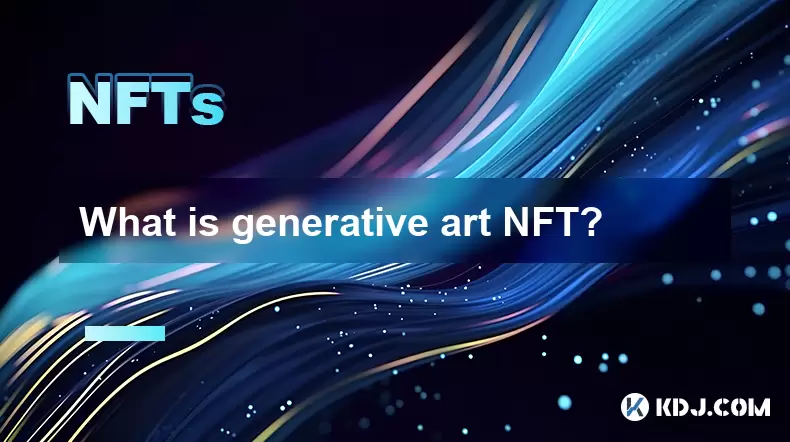
What is Generative Art?
Generative art refers to artwork created using algorithms or autonomous systems. In this context, generative art involves the use of code—often written in programming languages like JavaScript, Python, or Processing—to produce visual elements that are unique and unpredictable. The artist sets a series of rules or parameters, and the system generates an output based on those instructions. This means each piece can be one-of-a-kind even when derived from the same underlying code.
The key element of generative art lies in its algorithmic nature, which introduces randomness and variation into the creative process. Artists often define variables such as color palettes, shapes, patterns, and layering techniques, allowing the software to combine these elements in novel ways. As a result, generative art blurs the line between human creativity and machine execution.
How Does Generative Art Work in the NFT Space?
In the context of NFTs (Non-Fungible Tokens), generative art takes on a new dimension by being minted on blockchain platforms. Artists write smart contracts that generate digital artworks automatically when users mint them. Each time a user purchases a token, the algorithm runs and creates a unique image or animation associated with that NFT.
This process typically occurs on blockchains like Ethereum, using standards such as ERC-721 or ERC-1155 for NFT creation. When someone mints a generative art NFT, the blockchain records the metadata, including the specific parameters used to create that particular artwork. These details ensure provenance, uniqueness, and ownership verification.
The beauty of generative art NFTs lies in their randomness and scarcity. Since no two pieces are exactly alike, collectors are drawn to the mystery and exclusivity of what they might receive after minting. Platforms like fx(hash), Art Blocks, and Objkt.com have become popular marketplaces for generative art NFTs due to their support for algorithmically generated content.
Technical Aspects Behind Generative Art NFTs
Creating a generative art NFT involves several technical components. First, the artist must design an algorithm that defines how the artwork will be structured. This includes setting up parameters like shape distribution, color schemes, stroke styles, and layering logic. Programming languages like p5.js, Three.js, or custom-built tools are commonly used to implement these algorithms.
Once the code is ready, it's embedded into a smart contract deployed on a blockchain platform. When a collector interacts with the contract—usually through a minting interface—the code executes on-chain or off-chain, generating a unique image. Some projects store the full artwork directly on-chain, while others reference external files hosted on decentralized storage solutions like IPFS.
An essential part of this process is ensuring that the metadata is immutable and verifiable. Metadata contains information about the artwork’s traits, rarity, and generation method. Properly structuring this data ensures transparency and allows future verification of authenticity.
Popular Platforms for Generative Art NFTs
Several platforms specialize in hosting and selling generative art NFTs. One of the most well-known is Art Blocks, which pioneered the concept of on-demand generative art. Artists upload their algorithms to the platform, and when users mint NFTs, the system runs the code to create a unique piece. Other notable platforms include fx(hash), built on the Tezos blockchain, and Objkt.com, which supports a wide range of digital collectibles.
These platforms offer tools for artists to upload, test, and deploy their generative scripts securely. They also provide interfaces where collectors can preview the generation process before minting. Smart contract integration and metadata handling are critical features these platforms emphasize to maintain integrity and transparency.
Each platform has different technical requirements and community standards. For example, some require on-chain rendering, while others allow off-chain generation with cryptographic proofs. Understanding these nuances is crucial for both creators and collectors entering the generative art NFT space.
Collecting and Trading Generative Art NFTs
Collectors enter the generative art NFT space for various reasons, including appreciation for algorithmic aesthetics, investment potential, and the thrill of acquiring rare combinations. Because each piece is generated randomly, certain traits or configurations may become highly sought after based on their rarity scores and visual appeal.
Trading generative art NFTs follows similar mechanics to other NFT markets. Platforms like OpenSea, Rarity.tools, and CryptoSlam! allow users to list, buy, and sell these tokens. However, evaluating the value of generative art requires understanding trait distributions, project popularity, and community engagement.
Some collectors use analytics tools to assess the probability of obtaining specific traits, helping them make informed decisions. Others participate in secondary markets to acquire previously minted pieces that feature desirable attributes. The dynamic nature of generative art makes it an exciting and evolving segment within the broader NFT ecosystem.
Frequently Asked Questions (FAQ)
What distinguishes generative art NFTs from regular NFTs?
Generative art NFTs are algorithmically created, meaning the artwork is generated based on predefined rules and randomness. Regular NFTs are typically static images or videos manually created by artists and uploaded directly to the blockchain.
Can I influence the outcome of a generative art NFT before minting?
Generally, you cannot choose the specific outcome before minting. The artwork is generated at the time of purchase, and the final result is revealed only after the transaction is completed.
Are generative art NFTs stored entirely on the blockchain?
It depends on the platform and implementation. Some generative art NFTs store the full artwork on-chain, while others use decentralized storage like IPFS and link to the file via metadata.
How do I verify the authenticity of a generative art NFT?
You can verify authenticity by checking the smart contract address, reviewing the metadata, and confirming that the generation code is publicly accessible and unaltered.
Disclaimer:info@kdj.com
The information provided is not trading advice. kdj.com does not assume any responsibility for any investments made based on the information provided in this article. Cryptocurrencies are highly volatile and it is highly recommended that you invest with caution after thorough research!
If you believe that the content used on this website infringes your copyright, please contact us immediately (info@kdj.com) and we will delete it promptly.
- Coinbase's 'Everything App' Vision: Base App Unites Crypto, Social, and Payments
- 2025-07-17 08:30:13
- Aster: Revolutionizing DeFi with Perpetual Contracts on US Equities
- 2025-07-17 08:30:13
- XRP's Technical Uptrend: Riding the Wave of Institutional Momentum
- 2025-07-17 09:10:13
- Riding the XRP Surge: A Long-Term Strategy for Savvy Investors
- 2025-07-17 09:30:13
- Crypto Price Check: XRP and Solana Show Some Grit Amidst Market Jitters
- 2025-07-17 09:30:13
- TAC Mainnet & Altcoin Launch: DeFi on Telegram, But What About That $350 Price?
- 2025-07-17 08:50:13
Related knowledge
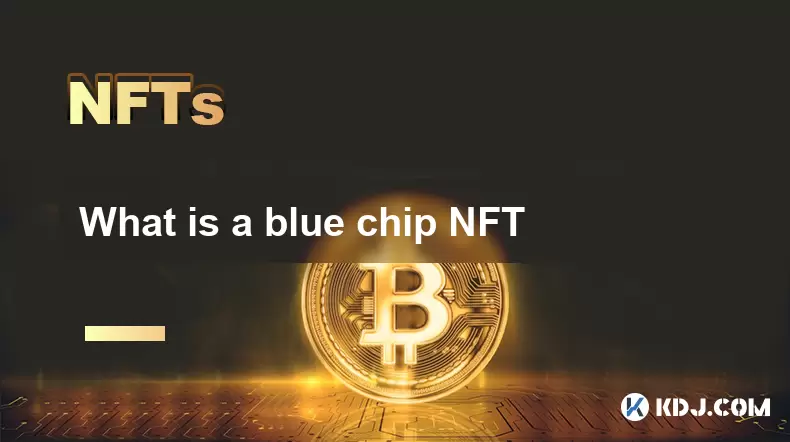
What is a blue chip NFT
Jul 17,2025 at 07:07am
Understanding the Concept of a Blue Chip NFTIn the world of non-fungible tokens (NFTs), certain digital assets stand out due to their consistent value...
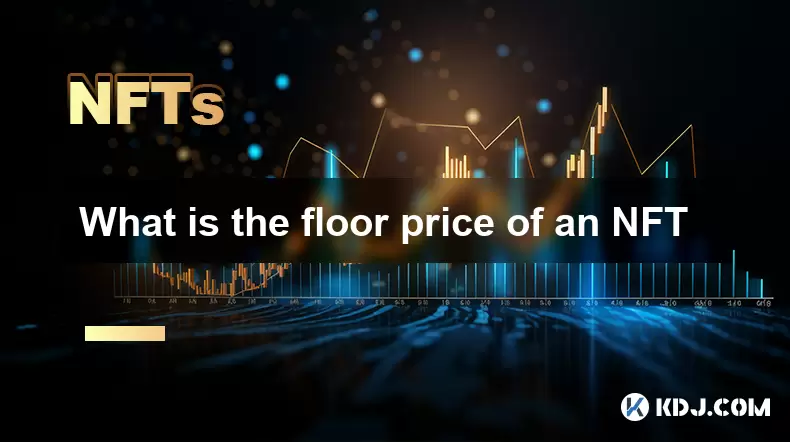
What is the floor price of an NFT
Jul 11,2025 at 07:56am
Understanding the Concept of Floor Price in NFTsIn the world of non-fungible tokens (NFTs), the floor price refers to the lowest price at which a part...
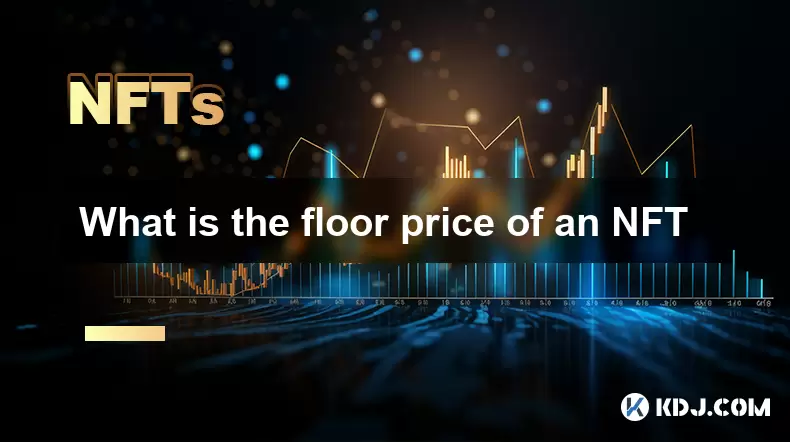
What is the floor price of an NFT
Jul 13,2025 at 06:21am
Understanding the Concept of Floor Price in NFTsThe floor price of an NFT (Non-Fungible Token) refers to the lowest listed price for a particular NFT ...
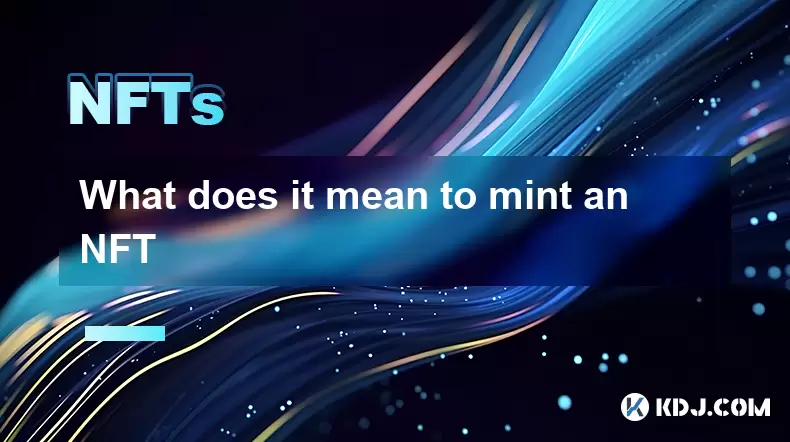
What does it mean to mint an NFT
Jul 11,2025 at 11:56pm
Understanding the Concept of Minting an NFTTo mint an NFT means to create a unique digital asset on a blockchain. This process involves converting a d...
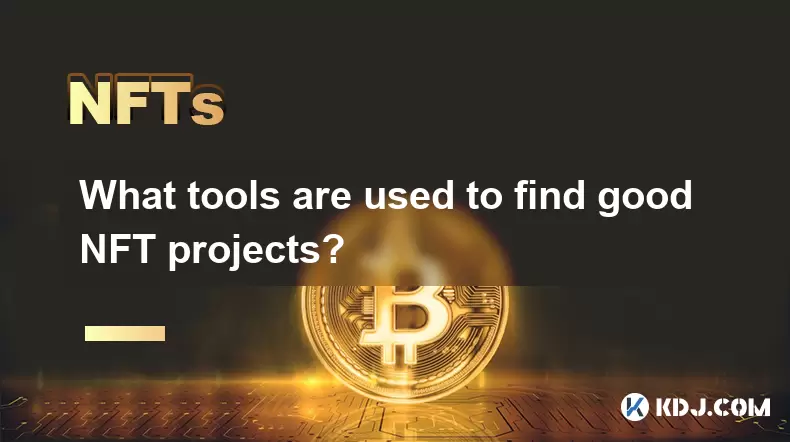
What tools are used to find good NFT projects?
Jul 10,2025 at 12:42pm
Understanding the Importance of NFT DiscoveryIdentifying promising NFT projects is a critical skill for collectors, investors, and creators within the...

What is the difference between owning the NFT and the IP?
Jul 15,2025 at 07:28pm
Understanding the Concept of NFT OwnershipWhen someone purchases an NFT (Non-Fungible Token), they are acquiring a unique digital certificate that pro...

What is a blue chip NFT
Jul 17,2025 at 07:07am
Understanding the Concept of a Blue Chip NFTIn the world of non-fungible tokens (NFTs), certain digital assets stand out due to their consistent value...

What is the floor price of an NFT
Jul 11,2025 at 07:56am
Understanding the Concept of Floor Price in NFTsIn the world of non-fungible tokens (NFTs), the floor price refers to the lowest price at which a part...

What is the floor price of an NFT
Jul 13,2025 at 06:21am
Understanding the Concept of Floor Price in NFTsThe floor price of an NFT (Non-Fungible Token) refers to the lowest listed price for a particular NFT ...

What does it mean to mint an NFT
Jul 11,2025 at 11:56pm
Understanding the Concept of Minting an NFTTo mint an NFT means to create a unique digital asset on a blockchain. This process involves converting a d...

What tools are used to find good NFT projects?
Jul 10,2025 at 12:42pm
Understanding the Importance of NFT DiscoveryIdentifying promising NFT projects is a critical skill for collectors, investors, and creators within the...

What is the difference between owning the NFT and the IP?
Jul 15,2025 at 07:28pm
Understanding the Concept of NFT OwnershipWhen someone purchases an NFT (Non-Fungible Token), they are acquiring a unique digital certificate that pro...
See all articles

























































































